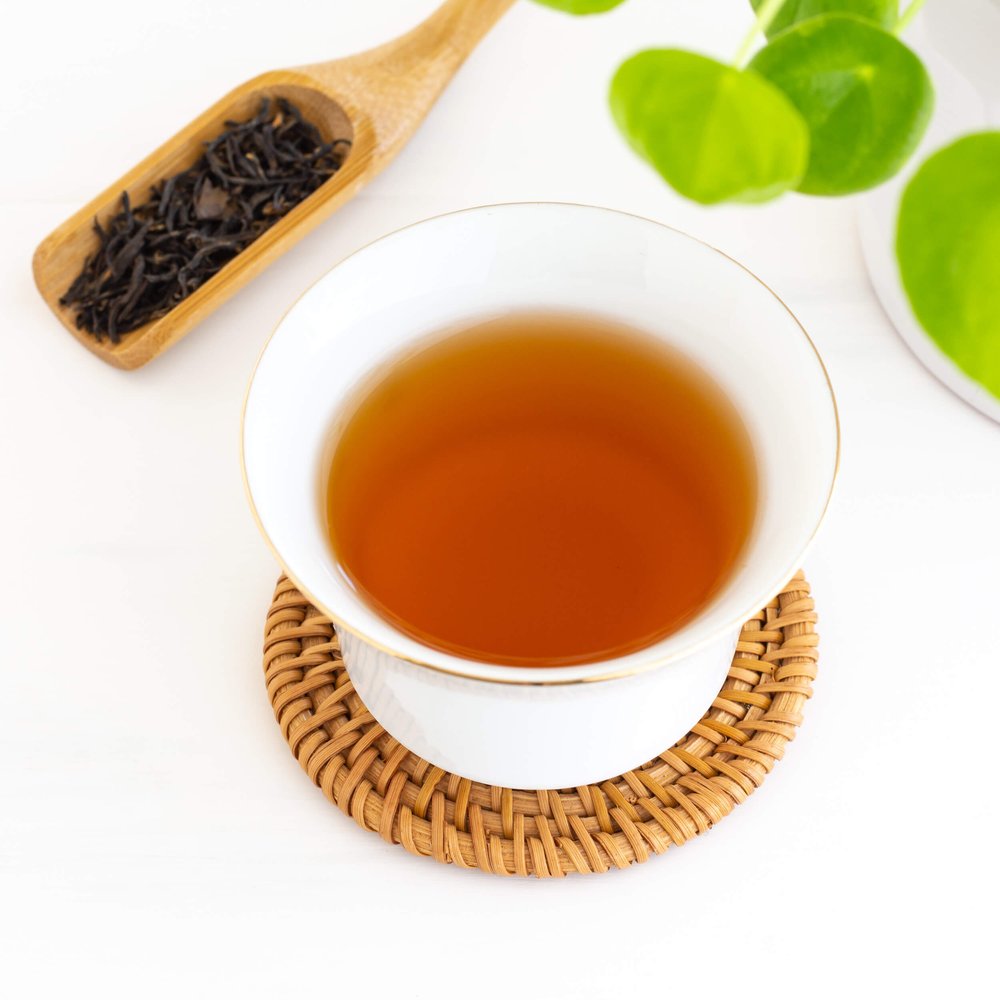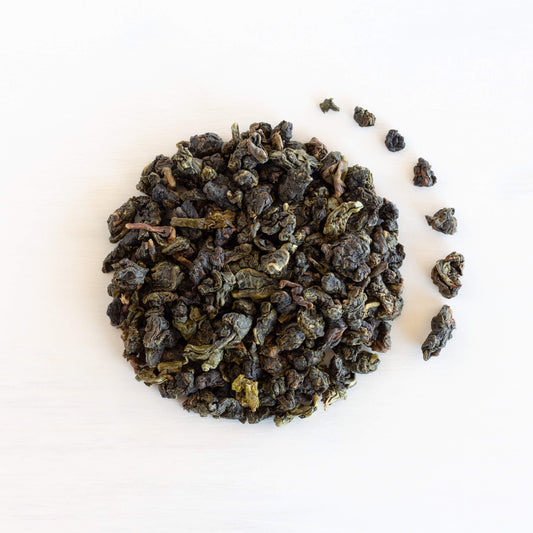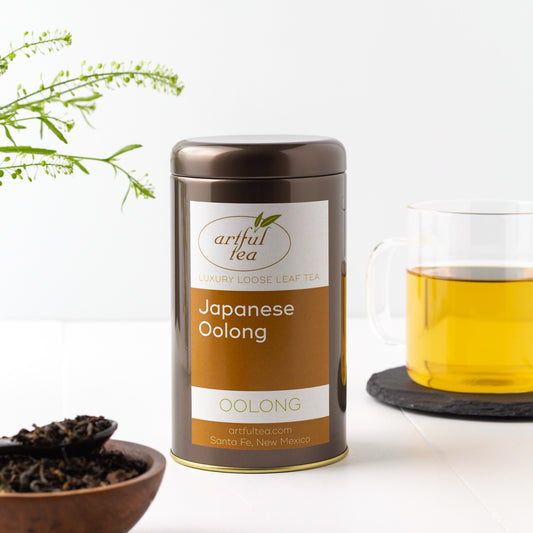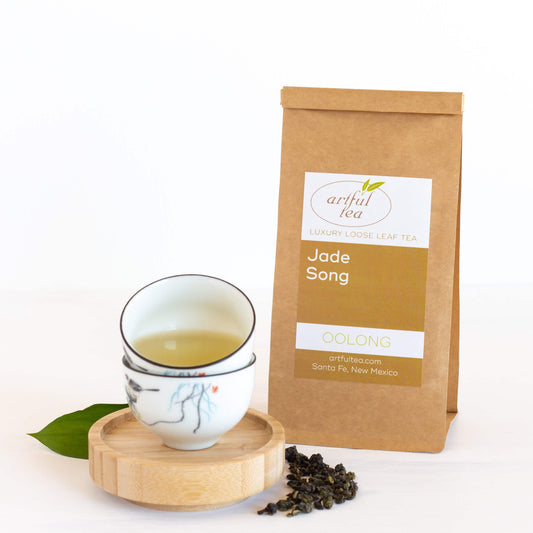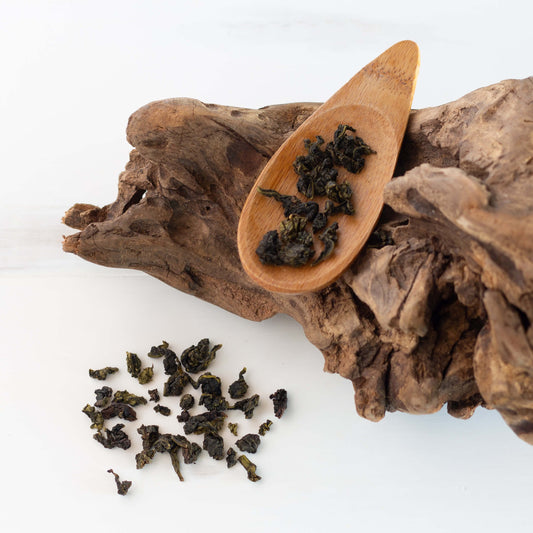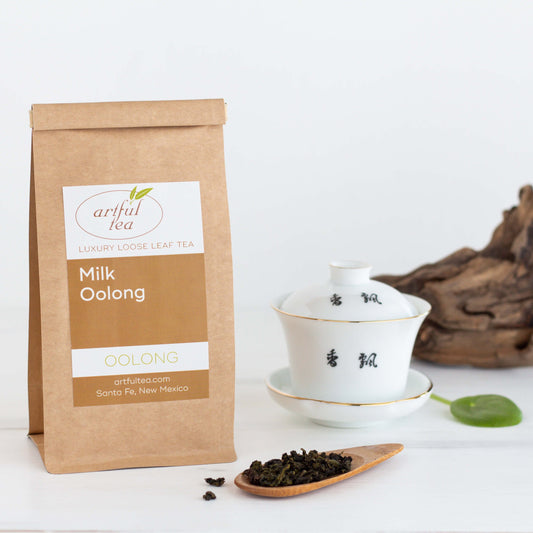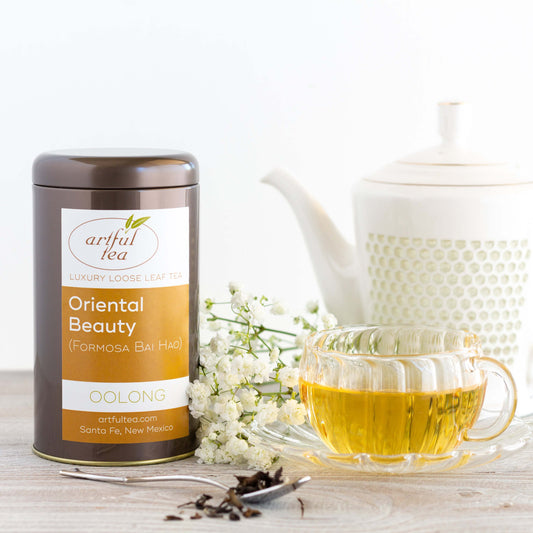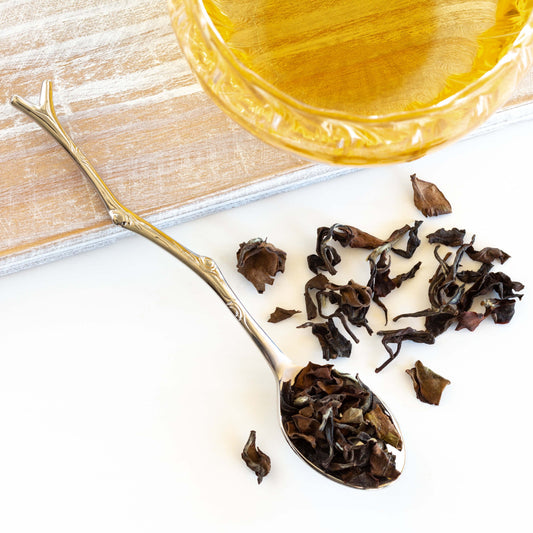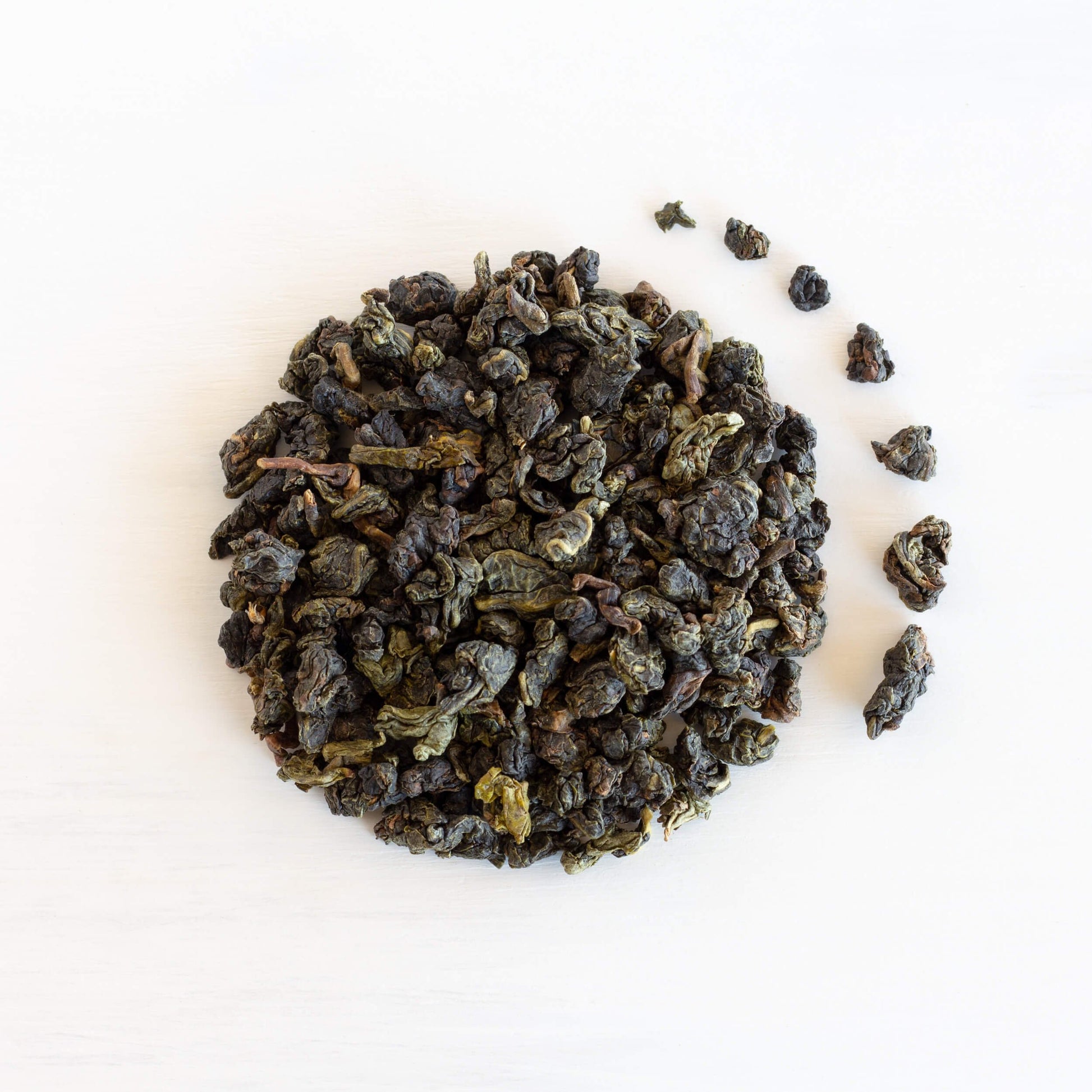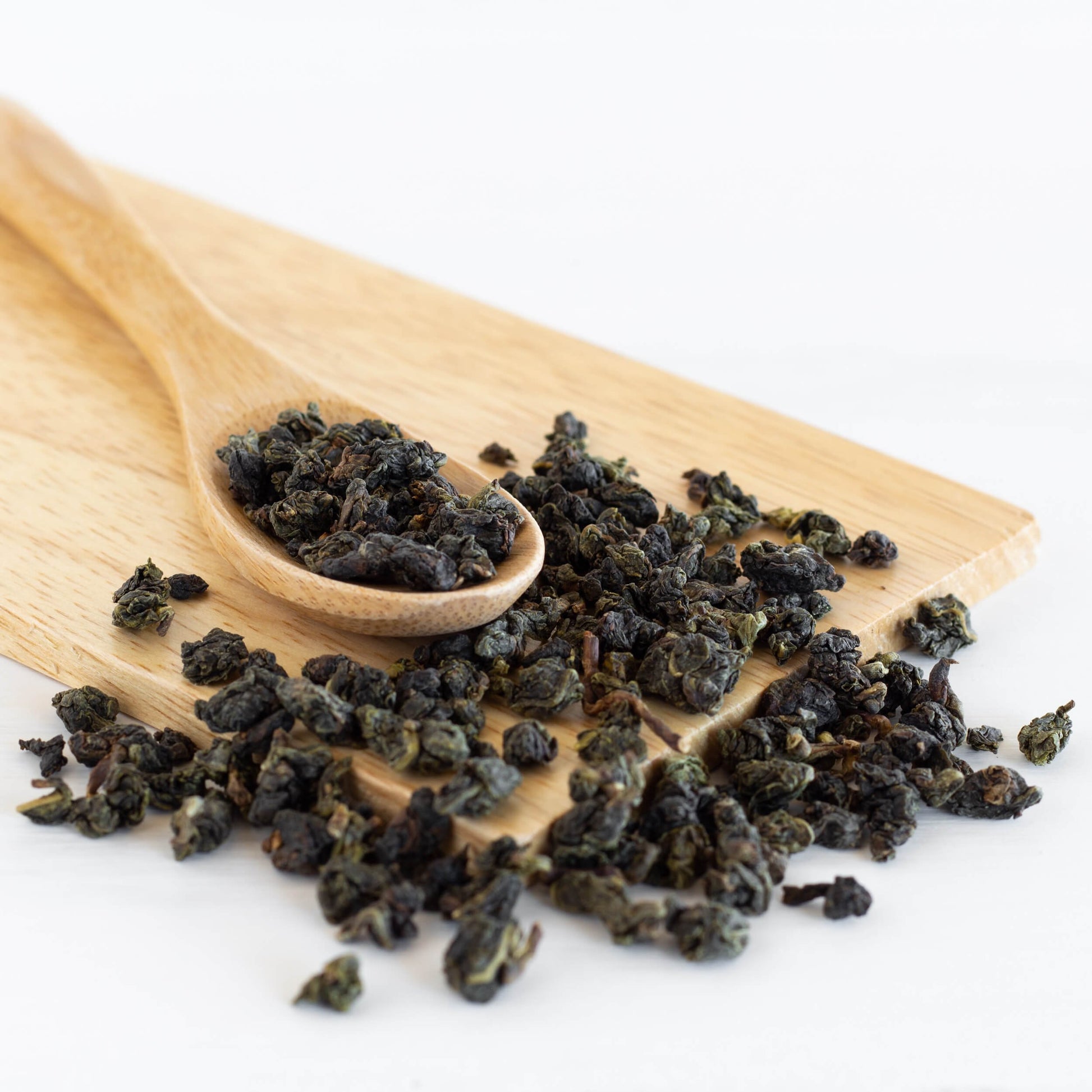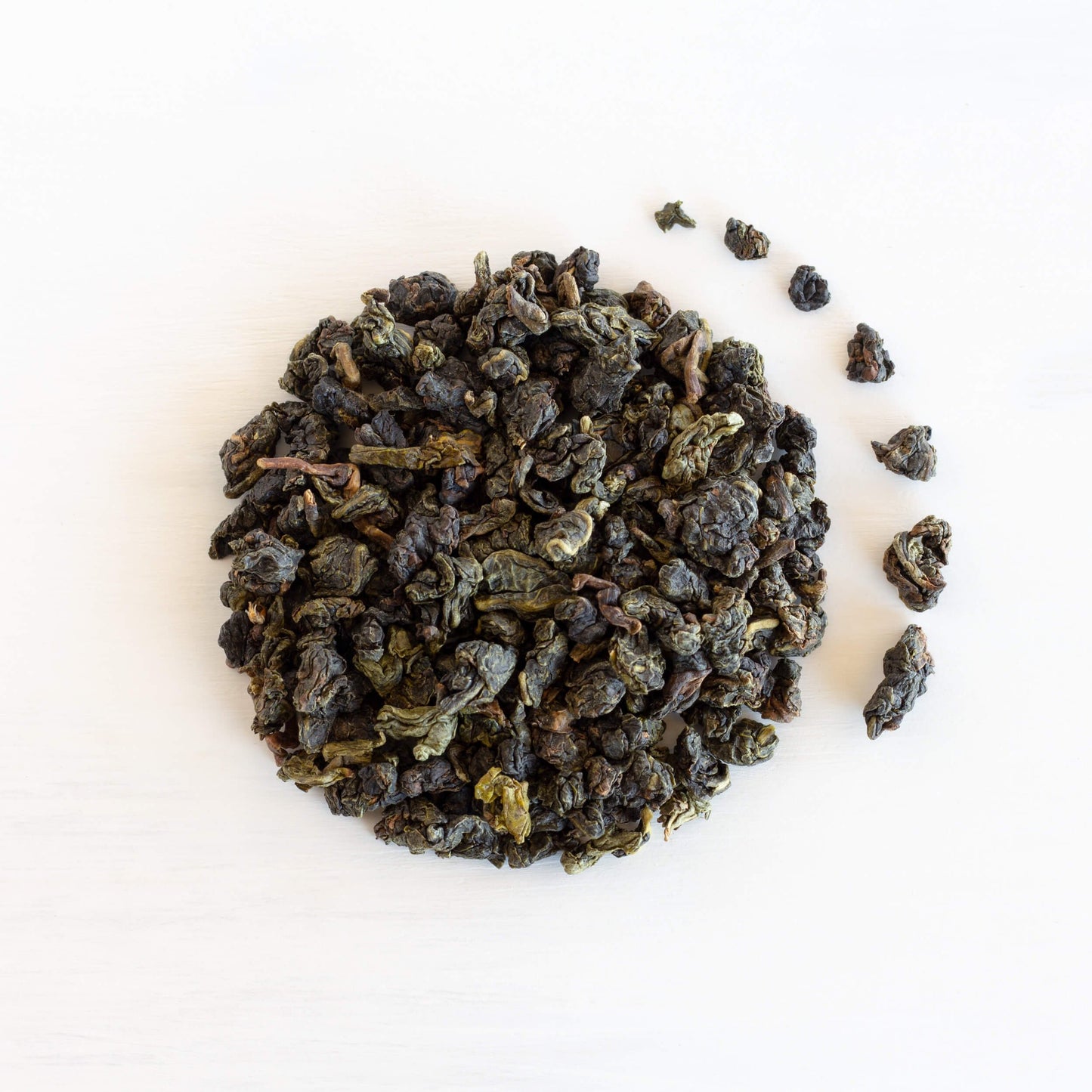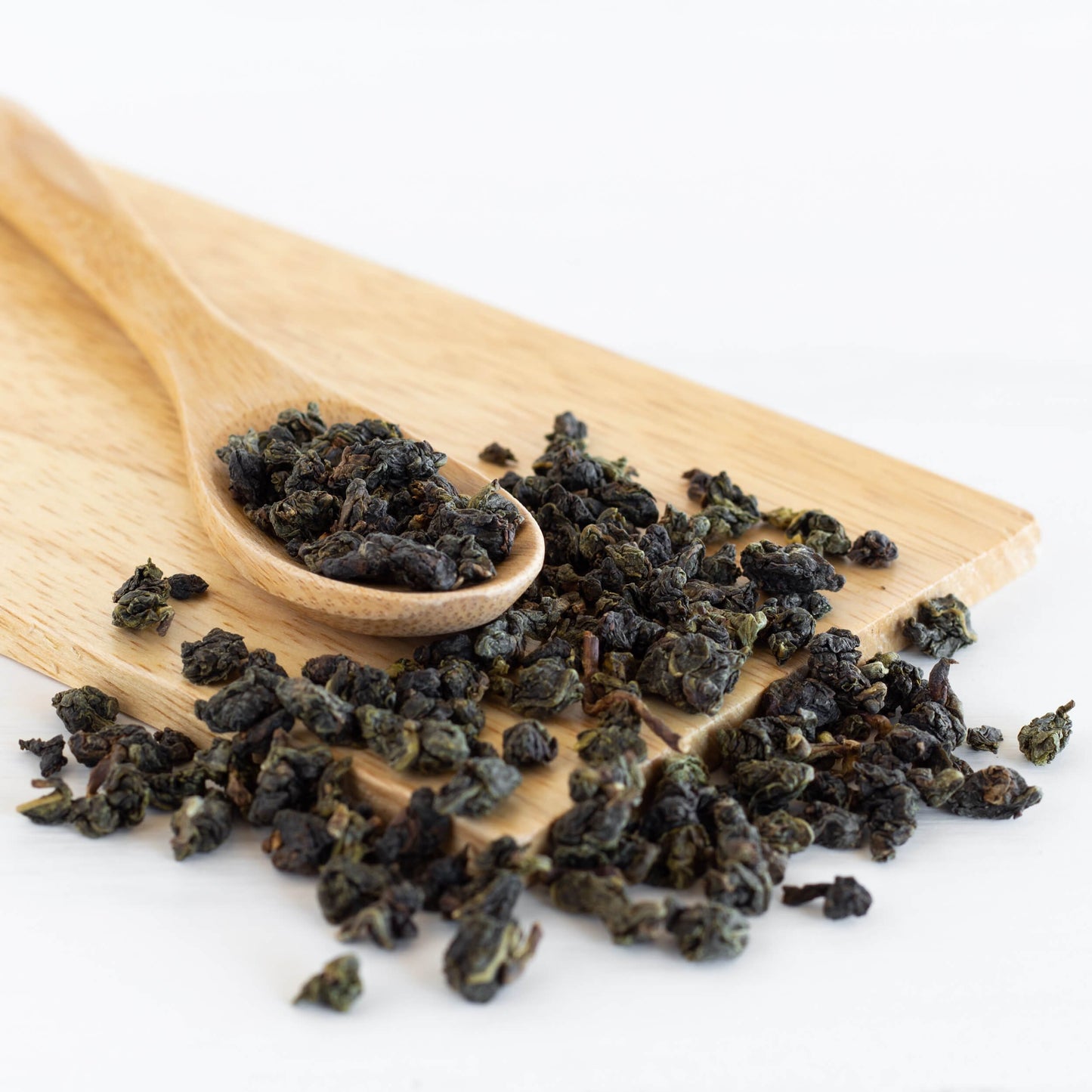What is oolong tea?
Oolong is a partially oxidized tea made from the leaves of the camellia sinensis plant. Oolongs fall somewhere in between black teas, which are fully oxidized, and green teas, which are unoxidized, and share some common characteristics with both of these types of tea.
Oolongs can vary in their oxidation level, ranging from approximately ten to ninety percent oxidized, depending on the particular tea. Because of this, oolong can differ widely from one another, and may taste more similar to a black or a green tea depending on how they are processed. In terms of flavor, various aspects determine where an oolong tea falls along the green to black tea spectrum in addition to oxidation, including terroir, harvest date, processing style.
Oolong tea history
China and Taiwan are the best known producing countries in the world today. The moniker “oolong” is an English transliteration of the Chinese “wulong,” meaning black dragon. In China, oolong teas are sometimes also referred to as dark green teas. Chinese tea production reaches back centuries, in particular among the geographic regions of Fujian and Guangdong. Within Fuijan, tea production is clustered around the areas of the Wuyi Mountains and Anxi County. Oolong teas are closely associated with Gonfu Cha, a traditional Chinese tea ceremony where tea leaves undergo many successive infusions in order to draw out different nuances in flavor.
Taiwan, China’s neighbor to the east, is a relative newcomer to the world of tea, with tea production beginning in the early eighteenth century on the island of Formosa. Taiwanese oolongs tend to have lower oxidation levels than their Chinese counterparts, and are often lighter and more similar to green teas. In recent years, Taiwan has experienced a rapid surge in the demand for their unique teas, including speciality oolongs such as Milk Oolong.
In recent years, some oolong teas have been produced in other countries, such as India, Vietnam, and Sri Lanka. While these countries are still perfecting their oolong recipes, and haven’t yet achieved the stature of China or Taiwan when it comes to oolong production, many new and exciting oolongs originate from these countries!
How oolong tea is made
After the leaves from the tea plant are harvested, the leaves are withered and partially oxidized. During this process, oolong tea leaves may be rolled or shaped into tight balls or twists. The shaping and rolling is what contributes to an oolong tea’s unique appearance and characteristics. Because many oolongs consist of an entire tea leaf that is delicately rolled into a smaller, more compact shape, oolong teas are an excellent candidate for multiple infusions, and may be steeped several times without losing their flavor.
After the tea leaves are partially oxidized and carefully shaped, they may also be roasted, which imparts a rich, nutty flavor to the teas. Depending on the level of oxidation, the shaping process, and whether or not they are roasted, oolong teas can vary widely in terms of their shape, color, and flavor.
Oolong tea health benefits
Like all teas made from the leaves of the camellia sinensis plant, oolong teas have a wide variety of health benefits. Some benefits of oolong tea include:
- Boosts energy
- Enhances mood
- Good for focus
- Supports immune system
- Helps with digestion
- Alower-caffeine alternative to coffee
- Helps keep you hydrated
- It tastes good!
Oolong tea caffeine content
Like other types of tea, oolong tea contains a moderate amount of caffeine. In general, oolong tea contains less caffeine than black tea, and more caffeine than green tea. If you infuse oolong teas multiple times, each successive infusion will contain less caffeine than the previous one.
How to make oolong tea
Oolong teas can be prepared using a western preparation method, or can be enjoyed by using the Chinese gongfucha method.
What you'll need
Before you begin making a cup of tea, it’s a good idea to assemble everything you need. This includes the loose leaf tea you’d like to drink, your mug, cup, or pot, your infuser or filter, and your tea kettle.
Oolong tea water temperature
You should fill your kettle with cold, filtered water and turn it on. If you don’t have a stovetop or electric tea kettle, you can also heat up water using a pot on the stove. In a pinch, you can even heat up hot water in the microwave.
The proper tea brewing temperature for oolong teas is about 195 degrees. Water should have a few bubbles but should not yet have reached a hearty boil.
How much tea leaves to use
In general, we recommend using one teaspoon of loose leaf tea per six ounces of water. Keep in mind that measuring tea leaves isn’t an exact science; feel free to eyeball it or use whatever spoon you have on hand.
How long to steep oolong tea
Once your water has reached the desired temperature, the next step is to infuse your tea leaves. We always recommend pouring hot water over tea leaves, rather than spooning tea leaves into hot water. Pouring water over the leaves helps to ensure that every part of the leaf is saturated, which makes for more flavorful tea and helps the tightly-rolled oolong tea leaves to unfurl and expand.
How long you should steep your tea will depend on what type of tea it is. Oolong teas should be infused for approximately two to three minutes for a first infusion.
Oolong tea and gongfucha
Oolong teas can be steeped several times, with each infusion resulting in subtle differences in flavor.
Gongfucha is a tea ceremony practiced in China and in other Asian countries, and is designed to maximize the flavor and aesthetic experience of drinking a cup of tea over multiple infusions. Gong Fu Cha is translated as “making tea with great skill”—a practice that allows you to focus on the simple process of preparing tea and elevate it to an art.
To brew tea using the Gong Fu Cha method, you’ll need a small-sized teapot. These pots may be made out of yixing clay, which develops a patina over time, or they may be made out of porcelain or ceramic. They often come with two or more small cups to pour your tea into. Depending on the size of your pot and the size of your tea leaves, use somewhere between half a teaspoon and two teaspoons of tea leaves. Heat your water and infuse your tea leaves for only a few seconds, then pour your tea into the small cups. Repeat this process, infusing the tea leaves for 10-15 seconds at a time before pouring the tea.
By preparing tea using this method, you can get four or five (or more!) infusions from your tea. Gong Fu Cha is a meditative process that allows you to savor the subtle differences in each successive infusion of tea.
Our oolong teas
Here are ArtfulTea, we have a variety of oolongs to strike your fancy, from the crisp, classic Jade Song to the dark, fruity Passion Petal and everything in between!
Jade Song Oolong
A superior quality oolong from Taiwan, Jade Song contains large, hand-rolled leaves that unfurl to release a delicate vegetal flavor with a smooth finish. Many infusions are possible with this classic, fragrant tea that tends to be more green than dark.
Fine Ti Kuan Yin Oolong
One of the most famous Chinese oolongs, Fine Ti Kuan Yin has a distinctive and highly-prized orchid-like flavor. This tea brews up a smooth, fragrant golden-yellow liquor with a floral character and a hint of sweetness.
Milk Oolong
Prized for its milky aroma and rich, tangy flavor, this Milk Oolong is produced by hand in the Fujian Province of China, within the Prefecture of Quanzhou. These hand-rolled leaves are a rich olive-green color and brew into a golden-green liquor. This relatively new cultivar of tea has the distinctive, mellow buttery flavor sought by those who enjoy specialty oolongs!
Amber Autumn Oolong
Amber Autumn Oolong is an “autumn flush” oolong sourced from Nepal. This double roasted oolong is more fully oxidized than other oolong teas, and features a medium body and a mellow natural sweetness. Amber Autumn Oolong can be infused multiple times.
Japanese Oolong
This rare Japanese oolong is light and floral, with a buttery mouthfeel and hints of jasmine and apricot. Our Japanese Oolong is sourced from Shimada in Shizuoka Prefecture, where the Ojiro river and the gentle mountains of the region contribute ideal growing conditions for tea. This spring-harvest tea is lightly oxidized.
Oriental Beauty Oolong
Oriental Beauty is also known as Formosa Bai Hao, white tip oolong, or champagne oolong. This heavily oxidized oolong tea is sourced from Taiwan. Oriental Beauty features dark brown leaves with silvery tips, and has notes of fruit, honey, and spice.
Ginseng Oolong
Our Ginseng Oolong comes in the classic form of small rolled balls of tea leaves, which are coated with ginseng and blended with licorice root. This enjoyable oolong brews into a naturally floral cup with a hint of spice. This blend is well-known in China for its many health benefits, and is sometimes called “King’s Tea” or “Emperor Oolong.”
Sandia Sangria Oolong
Our Sandia Sangria Oolong is a fruity sangria-inspired blend with hints of watermelon, lemon, and orange. This tea is named after New Mexico's Sandia mountains—sandia means "watermelon" in Spanish, which is what these mountains are said to look like when they glow red at sunset. Sandia Sangria is delicious hot and also makes an excellent iced tea!
FAQs about oolong teas
What does oolong tea taste like?
Because oolong teas are so diverse, there's no one flavor note that describes all oolong teas. That said, oolong teas tend to have several commonalities. They often have a lighter body than black teas, but are more robust than green teas. Some oolong teas have fruity or floral notes, while others are malty or subltey smoky.
Is oolong tea good for you?
Oolong tea, like other types of tea, has plenty of benefits. It can help to keep you hydrated, boost your energy levels, and help with digestion, among other beneficial properties.
Is oolong tea the same as black tea or green tea?
Oolong tea, black tea, and green tea are three distinct types of tea. Although they are made from the same plant, they undergo different processing steps. Oolong teas tend to be somewhat lighter than black teas and darker than green teas. Oolong teas are often composed of whole tea leaves that are hand-rolled into small balls.
How long should you steep oolong tea?
Oolong tea should be infused around two to three minutes.
What is oolong tea made out out?
Oolong tea is made out of tea leaves from the camellia sinensis tea plant. In many cases, these tea leaves are tightly rolled into small balls. Oolong tea leaves may also be blended with other fruits, herbs, and spices when used as a part of flavored tea blends.
